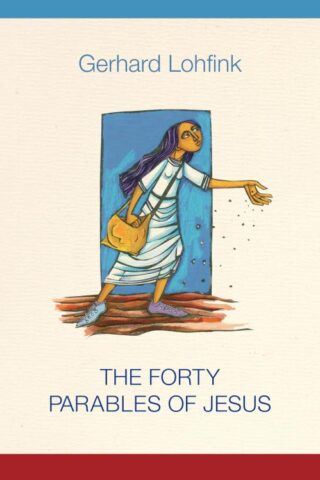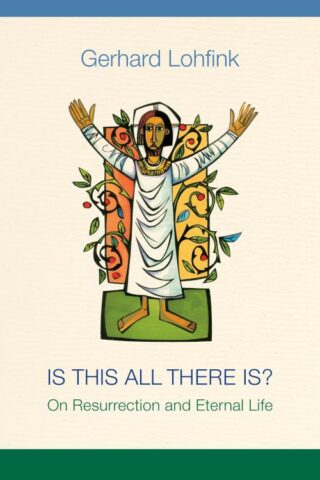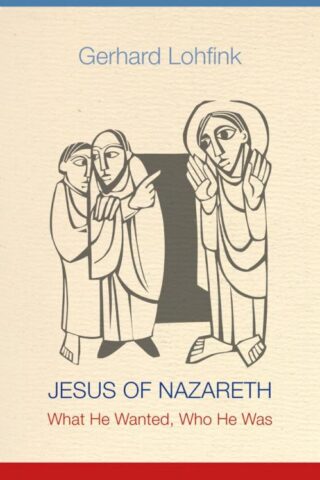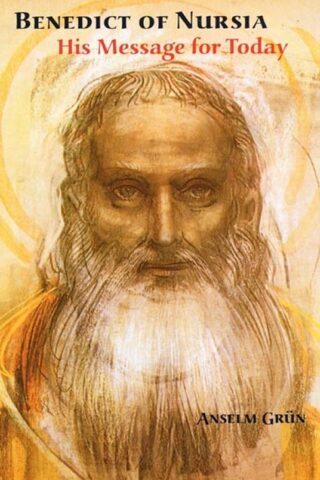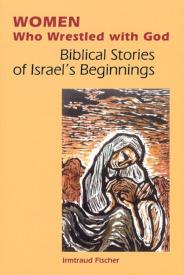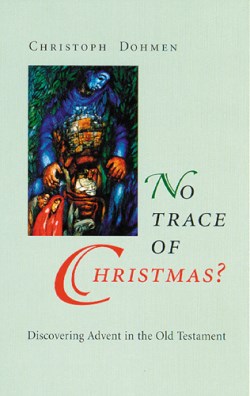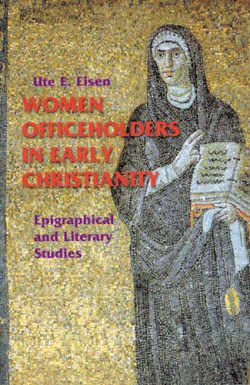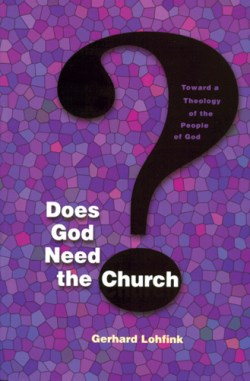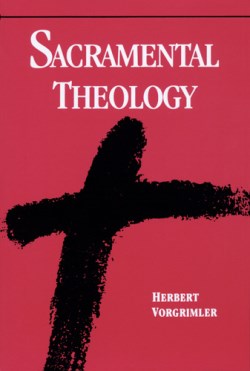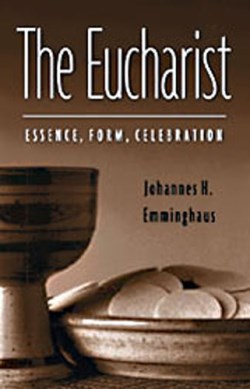Linda Maloney
Showing all 10 resultsSorted by latest
-
40 Parables Of Jesus
$29.95Add to cartIn this book, which covers all of Jesus’ parables, award-winning author Gerhard Lohfink takes a closer look at the origins of each one-its shape, its realistic details, but most of all its original message and the situation into which it was once spoken. Jesus’ parables speak in bold images of the kingdom of God, making it present to us as they reveal something of the mystery of his own person.
Lohfink also offers a review of some of the scholarship in this area-as this topic has sustained research on Jesus since the first telling of these stories-but not for the purposes of debate. His reflections interpret the forty parables and show how they speak of the coming of the reign of God, lead us to Jesus, and reveal the mystery of Jesus himself.
-
Is This All There Is
$29.95Add to cartIs the Christian hope for resurrection still alive or has it become tired? How can we talk about the Resurrection today? Gerhard Lohfink takes up the question of death and resurrection in this new book. He argues against the dazzling array of today’s ideas and expectations and seeks his answers in Scripture, the Christian tradition, and human reason. With his characteristically gentle but clear language, he reveals the power of Christian resurrection, showing it is not about events that lie in the distant future but rather occurrences incomprehensively close to us. They were long since begun and they will embrace us fully in our own death..
-
Jesus Of Nazareth
$39.95Add to cartWho was Jesus? A prophet? There have been many of those. A miracle-worker? A radical revolutionary? A wise teacher? There have been many of these, too. In his latest book, renowned Scripture scholar Gerhard Lohfink asks, What is unique about Jesus of Nazareth, and what did he really want?
Lohfink engages the perceptions of the first witnesses of his life and ministry and those who handed on their testimony. His approach is altogether historical and critical, but he agrees with Karl Barth’s statement that “historical criticism has to be more critical.”
Lohfink takes seriously the fact that Jesus was a Jew and lived entirely in and out of Israel’s faith experiences but at the same time brought those experiences to their goal and fulfillment. The result is a convincing and profound picture of Jesus.
-
Benedict Of Nursia
$14.95Add to cartBrief reflections on aspects of the Rule of Benedict.
Ponders how work is an aid to prayer and how the Benedictine vow of stability is essential to building community.
Each chapter concludes with a brief reflection ont he state of contemporary society and how the aspect of the Rule of Benedict treated in the chapter applies to the needs of today. -
Women Who Wrestled With God
$16.95Add to cartIsrael’s story as a people of God is a tale of women, men, and their children. Moving past a patriarchal reading of the Bible, Fischer presents a new interpretation of neglected biblical narratives. From a gender-balanced perspective, she reveals the political dimension and narrative continuation of ancestral stories in the Book of Ruth. Women Who Wrestled with God demonstrates the significance of women in religious history in a way that will inspire as well as inform.
-
No Trace Of Christmas
$11.95Add to cartWhat is the significance of Jesus’ genealogy in the Gospel of Matthew? Why do we put and ox and ass at our creches? Why did angels appear to the shepherds? In No Trace of Christmas? Christoph Dohmen explains why the answers to these and other questions regarding our understanding of Christmas are to be found not in the New but in the Old Testament.
For the most part Christians regard the Old (or First) Testament as pre-history, a preparation for, or a promise of the New Testament and its proclamation of Christ. This is especially true during Advent, when the Christian liturgy directs our attention to the promise and its fulfillment. Yet Advent’s status as the beginning of the Church year-as a turning point-calls us to look back in order to move forward. We read intensively from Old Testament prophecy texts with a special view toward their future meaning. Hence, Advent is the time of the year when Christians are reminded that they have one sacred Scripture in two parts, one Bible composed of the Old and New Testaments.
Since it was with the aid of the Old Testament that the early Church interpreted the event at Bethlehem, many of the images and biblical texts associated with Christmas can only be understood by following their Old Testament roots. Like the Magi who followed the star, we can, with Dohmen’s help, follow in the liturgy of Advent and Christmas the traces that lead us into the Old Testament. Following those traces, we can arrive at a Christmas that appears to us in a new light, that of the Old Testament.
-
Women Officeholders In Early Christianity
$49.95Add to cartWomen Officeholders in Early Christianity is a scholarly investigation of the evidence for women holding offices of authority in the first several centuries of Christianity. Ute Eisen focuses on inscriptions and documentary papyri (private letters, official documents, contracts, and other such pieces) that have scarcely been considered before.
Eisen presents the first extensive documentation of selected Greek and Latin inscriptions, plus a few documentary papyri, that witness to the existence of Christian women officeholders. The intent is to show the multiplicity of titles borne by women and to illustrate the narrowness of previous research on this topic. A single chapter is devoted to each of the titles of office or functional designations found in the sources. The epigraphical, papyrological, and literary witnesses are accordingly grouped by function. Topics are “Apostles,” “Prophets,” “Teachers of Theology,” “Presbyters,” “Enrolled Widows,” “Deacons,” “Bishops,” and “Stewards.”
Central to Women Officeholders in Early Christianity are the epigraphical witnesses. To this point they have been only marginally incorporated into research on women officeholders in the Church. In order to ensure correct interpretation, the majority of the inscriptions discussed have extensive documentation. They are organized geographically and chronologically. Besides the documentation they are commented on in the context of the existing literary sources. The book concludes with a chapter entitled “Source-Oriented Perspectives for a History of Christian Women Officeholders.” The book also includes a bibliography of reference works, primary sources, and secondary sources.
-
Does God Need The Church
$39.95Add to cartAre not all religions equally close to and equally far from God? Why, then, the Church? Gerhard Lohfink poses these questions with scholarly reliability and on the basis of his own experience of community in Does God Need the Church?
In 1982 Father Lohfink wrote Wie hat Jesus Gemeinde gewollt? (translated into English as Jesus and Community) to show, on the basis of the New Testament, that faith is founded in a community that distinguishes itself in clear contours from the rest of society. In that book he also described a sequence of events that moved directly from commonality to a community that was readily accessible to every group of people and was made legitimate by Jesus himself. Only later did Father Lohfink learn, within a new horizon of experience, that such a description is not the way to community. The story of the gathering of the people of God, from Abraham until today, never took place according to such a model.Today Father Lohfink states that he would not write Wie hat Jesus Gemeinde gewollt? the same way. The situation of belief and believers has undergone a shift: the question of the Church has become much more urgent. Church life is declining and the religions are returning, often in new guises.
In light of these shifts and the change in his own view of community, Father Lohfink inquires in Does God Need the Church? of Israel’s theology, Jesus’ praxis, the experiences of the early Christian communities, and of what is appearing in the Church today. These inquiries lead to an amazing history involving God and the world-a history that God presses forward with the aid of a single people and that always turns out differently from what they think and plan.
-
Sacramental Theology
$34.95Add to cartBoth resistance to and renewed interest in the sacraments mark current theological thought. This work acknowledges human limitations of the sacraments but stresses that God’s relationship to human beings cannot be other than “sacramental.” Sacramental structures and events constitute salvation history, and thus permeate all theology. What makes this sacramental view comprehensible is faith; faith is an indispensable precondition for a sacramental theology.
Therefore the author first demonstrates the preconditions of faith on which sacramental theology rests, and what place it holds within the whole of theology. Following this, he briefly presents the concept of sacraments and the history of that concept, the teachings of Church tradition on sacraments in general, and the basic features of a sacramental theology. Next he explains from a theological perspective the traditional sacraments of the Catholic Church, including related topics such as indulgences and sacramentals.
-
Eucharist : Essence Form Celebration (Revised)
$36.95Add to cartThis well-known and respected work on the eucharistic celebration has been updated and revised. The editor Monsignor Maas-Ewerd has incorporated the insights of recent research, updated the bibliography, and re-formulated many passages in light of some important changes in thought and language since the first edition.
The Eucharist: Essence, Form, Celebration helps readers gain an understanding of correct form for celebration of the eucharistic liturgy in light of the renewals of Vatican Council II. It is therefore an “explanation of the Mass,” as Pius Parsch, to whom the first edition was dedicated, understood it. It is an explanation both of the biblical foundations and of the historical development of the liturgy within its two-thousand-year tradition. Thus, Maas-Ewerd maintains that we must inquire into both aspects-Jesus’ foundational intention and the Church’s long tradition of celebrating the Lord’s legacy-to obtain a clear picture of the enduringly valid form of the Mass at all times, including its present realization.
In the foreword to the first edition, Johannes Emminghaus wrote that, despite the many content and language changes since the first edition, Parsch’s fundamental principle was correct, and it remains so today: the essence or nature of the liturgy can only be explained on the basis of Christ’s institution (as witnessed in Scripture) and the traditional teaching of the Church. Its form, in turn, with its many changes and its high and low points, is explicable also through Scripture and history; but the manner of its celebration can only be explained through the form as we know it and especially through the concrete faith of people.
The intent of The Eucharist: Essence, Form, Celebration is practical: it is meant as an aid to an appropriate and responsible celebration of the congregational Eucharist. Readers-those in ministry, teachers, catechists, and members of parish liturgical committees and study groups, as well as those interested in Church history-are invited to an active participation, one that bears fruit because it stems from faith.
Maas-Ewerd maintains that our task now is to live with the renewed liturgy, to integrate it more fully into our lives, and at the same time understand and celebrate it as a sign of salvation and as the Church’s self-expression. The Eucharist: Essence, Form, Celebration encourages this process.

